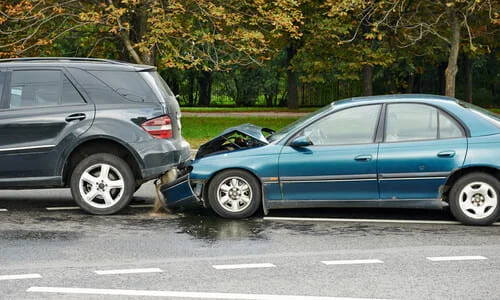 Car accidents happen fast and often when you least expect them. Even still, you must be focused on moving fast in order to seek compensation for the damages you have suffered, whether they were minor or severe.
Car accidents happen fast and often when you least expect them. Even still, you must be focused on moving fast in order to seek compensation for the damages you have suffered, whether they were minor or severe.
It can quickly become difficult to juggle unexpected doctor’s appointments and insurance claims while still working and keeping track of the usual responsibilities — all while meeting the state of California’s statute of limitations for tort claims, which include injuries and other losses.
In California, personal injury claims must be filed within two years of the date of the incident.
There are select cases where the date time begins tolling can be pushed back, such as when an injury was not discovered until later or where the liable party fled town, but ultimately two years is all you have.
That may seem like a long time, but when there are substantial injuries and damages endured during the accident, it is a guarantee that the period to file a claim will go by quickly.
You will also need to put efforts into investigating the cause of your injury, fully documenting damages, and pursuing any legal means necessary to recover them.
When grappling with all these responsibilities in such a short timeframe, you deserve to have an experienced legal team on your side to assist with handling your insurance claim. Call Singh Ahluwalia Attorneys at Law today to see how we can help.
Our attorneys have years of experience and a proven track record of success, giving you the best shot at reaching a settlement for your car accident claim.
If you want your claim to move quickly, reach out to the attorneys who can help you succeed. Schedule a free, no-obligation case review today when you call (559) 878-4958 or complete our form online today.
What’s in the Statute of Limitations on Car Accident Claims in California?
In California, car accident claims are part of the personal injury category. These claims include various events that caused injury to another party, like medical malpractice, slip and fall accidents, dog bites, and more.
Personal injury is one of the broadest categories of legal claims, stemming from any number of possible events, so long as one party’s negligence causes injuries and damages to another.
As mentioned, the time frame to file a personal injury lawsuit is only two years in California, with the clock starting from the time of injury in most cases. However, if injuries present themselves later, like whiplash or chest pain, then there may be added time to file a lawsuit.
What Is a Statute of Limitations?
Statutes of Limitations are deadlines created by legislation in order to, in theory, place a reasonable limit on when parties can file a claim against another party. Depending on the kind of case and who the named parties are, the time frame that a plaintiff has to file can vary.
Here are some examples of the kind of cases that are affected by a statute of limitations:
- Personal injury — Two years from the date of the injury. For injuries that are discovered at a later time, Plaintiff has one year to file a claim.
- Breach of contract — For cases with written contracts, Plaintiffs have four years to file a claim from the date the contract was broken. If the contract was not made in writing, then the statute of limitations is two years from when the contract terms were broken.
- Property damage — Three years from the date the damage occurred.
- Claims against a government agency — Claims must be filed against the correct agency within six months of the incident. There are some exceptions allowing up to one year to file.
- Medical Malpractice — Medical malpractice cases are injuries caused by negligence by a medical professional or healthcare provider. Injuries sustained by this kind of personal injury often take longer to manifest. Once an injury appears, the claimant will have 1 year to file their claim against the medical professional. Victims of medical malpractice cases will need to seek evaluation from another medical professional to prove that there was medical malpractice in the first place.
A legal claim is often no longer valid once the statute of limitations runs out. As a result, plaintiffs who miss this deadline will lose out on compensation that they likely would have received had they met their deadline to file.
What Is the Purpose of Statutes of Limitations?
Statutes of Limitations are placed to protect the fairness of a trial. Over time, memories will become fragmented and may fade. There is also the chance that evidence can be destroyed or compromised, and key witnesses can move away from the court’s jurisdiction.
With the risk of losing key pieces of evidence in a case, the law places deadlines to protect its integrity.
Additionally, claims with shorter deadlines encourage plaintiffs to proactively seek compensation for their injuries and other damages. Ensuring that claims are filed promptly helps protect parties from being hit with lawsuits that otherwise would be considered stale.
Government Agencies Have Shortened Deadlines
Involvement of government agencies shrinks the time to file for a personal injury case from two years to just six short months. During this shortened time frame, those looking to file a claim must identify the appropriate agency and file a claim directly through their site or mail.
In these cases, the injured party must act quickly to seek compensation for their sustained injuries and property damages. Working with a qualified and expert legal team can help make this process easier to understand and give you the best chance to receive compensation.
Delays to the Statute of Limitations
There are some exceptions where the two-year statute of limitations can be delayed. Also known as “tolling,” these cases are unique and often tied to victims who are minors.
The timer to file a personal injury claim does not start until they are eighteen years old. Just the same, victims who suffer from mental disabilities will not face a limited filing period until they regain total mental capacity.
The Discovery Rule
In law, new information or details for a case is identified during Discovery. Lawyers and the injured party will review all the evidence and gather facts and medical documents showcasing injuries and newly acquired medical conditions due to a car wreck.
The discovery rule is a way that, legally, a case can be delayed to allow for more time to analyze the facts surrounding a case once new information comes to light. Normally, this rule would apply when there are delayed diagnoses for injuries associated with an accident.
When the discovery rule applies to a case, it allows a delay in filing a claim for up to one additional year after the two-year statute of limitation deadline. It is important to understand that injuries sustained in car accidents are not always present right away.
There have been cases where pain begins days, if not weeks after, and for more complicated injuries, it can even be months before an injured party can receive a diagnosis.
Some common injuries seen in cases of delayed discovery are:
- Traumatic brain injuries (or TBIs) — Injuries caused by a blow to the head, leading to bruising and other soft tissue damage of the brain.
- Chest pain — Chest pains after a car accident often indicate broken ribs and may not be discovered until days after the collision.
- Abdominal pain — Can be associated with internal bleeding or organ damage.
- Back injuries — Especially those to the spine; these are notorious for presenting themselves weeks, if not months, after a car accident.
Delays Happen if the Defendant Is Out of State
If the defendant leaves the state of California, the statute of limitations can be delayed until they return. Any defendants who are not residing in California are not subject to lawsuits in California courts.
However, once the defendant is in California, the clock will begin to tick again, and a claim must be filed to meet the statute of limitation deadline.
Defendant Is Imprisoned
If the defendant is currently incarcerated, the injured plaintiff may be able to delay the start of the case’s statutory deadline calculation.
What Happens if You Miss the Two-Year Statute of Limitations Deadline?
Two years may sound like a long time — until one is overwhelmed with doctors’ appointments, therapy sessions, and dealing with insurance and their adjusters. When adding all of these processes to your daily tasks, two years will pass by quickly.
Claimants may file after the two-year deadline, but it is very easy for the court to dismiss the case due to the statute of limitations.
Even in cases where the victim is merely seeking a settlement, insurers and other liable parties are extremely likely to disregard the case, as there is no risk of legal consequences should they refuse to pay.
It is imperative that those who are hurt due to someone else’s negligence speak to a car accident law firm in Fresno as soon as possible to make sure that this deadline is not missed.
Don’t Wait to File Your Car Accident Claim Until Its Too Late
In the time it takes to file an insurance claim, submit evidence, and negotiate, it may not leave enough time to file a claim in the courts if you do this on your own. The best route is to speak to a car accident attorney as soon as possible to see if you have a claim and start the process.
Neither party prefers to go to court, and they will do whatever they can to come to a resolution.
Two years is not a long time, so don’t let the statute of limitations sneak past you. Missing out on the compensation you deserve should not happen because there was insufficient time between handling work, doctor’s appointments, and trips to the mechanic.
Singh Ahluwalia Attorneys at Law has decades of combined experience and is ready to fight for you.
Ready to see how we can help? Call us at (559) 878-4958 or submit our online form to schedule your free case review today.


